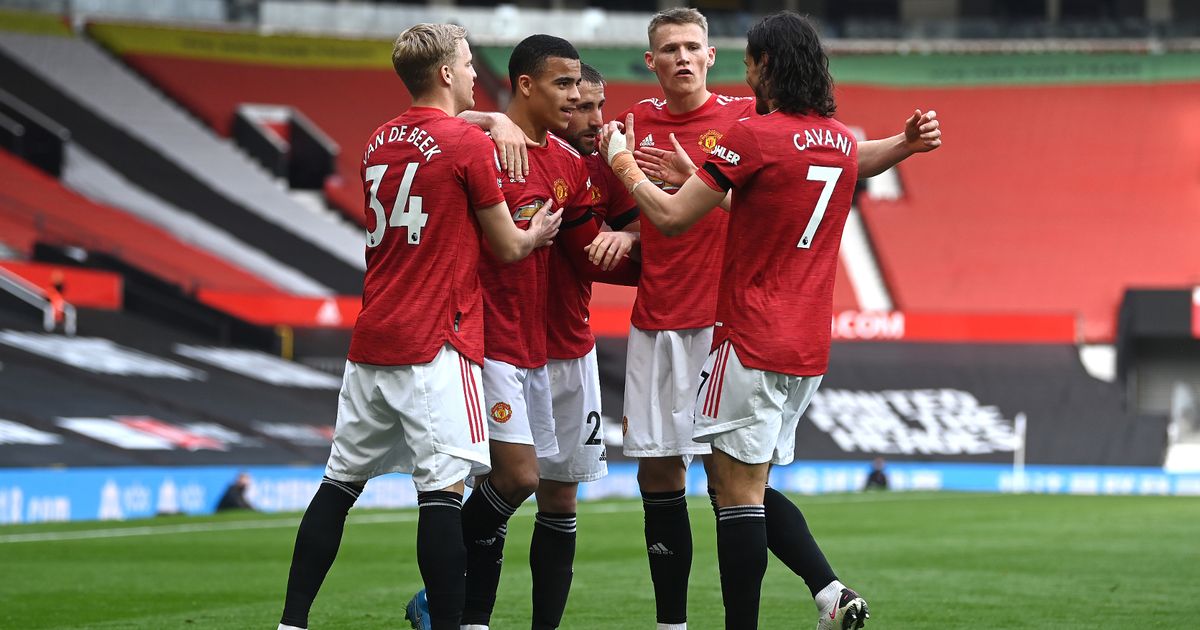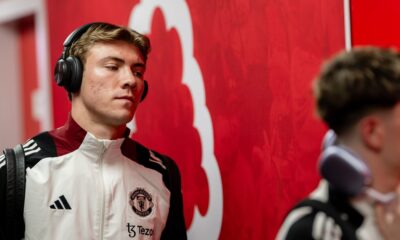
It is five years since the first lockdowns were announced in the United Kingdom and the MEN has taken a look at the ongoing impact on Manchester United

While COVID might not be impacting football in the way that it was back in 2020 and 2021, five years on from the first lockdown of the pandemic the ramifications for the game still remain wide-reaching.
For Manchester United, the club with the largest stadium capacity in the English domestic game, and the club with the biggest matchday revenue in the country, standing at £137million for the most recent set of accounts for the 2023/24 financial year, the impact was significant.
In the wider context of the game, the pandemic’s impact has been significant on finances. In the six years leading up to the 2019/20 financial year end, which took into account the impact of COVID from late March, Premier League clubs had posted a cumulative profit of £1.1billion during the period, with just two loss-making seasons.
In 2020, the pre-tax losses among Premier League clubs amounted to a staggering £992 million combined, followed by cumulative losses of £689m in 2021, £592m in 2022 and £711m for 2023. Not all of the 2024 financial data has arrived yet, but that trend of heavy losses is almost certain to continue given the data that has come out thus far.
Matchday revenue was so obviously impacted in both 2020, where home games were lost toward the end of the season in terms of a paying crowd, while the following season was one that was played behind closed doors. For the 2020/21 season, United pulled in just £7.1m in matchday revenue, attributed to the partial opening of stadiums towards the end of the campaign. The following season saw a surge in the numbers to £110.5m, growth of £103.4m.
Commercial was also greatly impacted, bouncing back by £26m year on year, but there was a hit in terms of the broadcasting rebate that was required due to the lost games for broadcasters to show as part of their agreed TV package. For United, the impact of that rebate saw broadcast revenue fall £40m to £215m in 2022.
As crowds returned to stadiums in their numbers in 2022, the finances of clubs have started to recover in terms of the revenue being generated, but costs have been impacted, not least through an increase in overheads for clubs, even down to the cost of electricity, while for clubs who have had to rely on borrowing heavily, interest rates have soared post pandemic, and that has had a significant impact on clubs who have sought to take on new debt since then.
For United, looking ahead to the future, that is impactful even down to the building of the club’s planned new £2 billion, 100,000-seater stadium that will be constructed on land adjacent to their current Old Trafford home.
United will almost certainly look towards the debt and private equity markets to raise the largest tranches of funding, and that will likely carry interest rates of between 5% and 7% when they come to engage. Looking at what rates looked like pre-pandemic, the Bank of England base rate was at 0.75% in August 2018. By March 2020, when COVID hit, it was brought to as low as 0.1%. Since then it has risen to as high as 5.25%, the highest since February 2008, with the current rate sitting at 4.5%. Raising debt right now is costly, and likely will be for some time, with the pandemic having lit the blue touch paper through the chaos that was caused in financial markets due to the pandemic.
In terms of other impactful areas for United, the transfer market was also affected, which in turn has pumped the brakes a little on how high fees were skyrocketing, with less clubs having major money in their pockets to spend freely, particularly with financial controls biting, and in many cases tightened due to the need for financial sustainability coming out of COVID. There is a smaller pool of buyers for the big players, with the likes of Barcelona, often the club who would drive the big ticket sales, suffering serious financial hardship as a partial result of COVID, with the club having sold off numerous parts of the club’s business to raise capital.
As noted by football finance expert Swiss Ramble when assessing the 2023/24 financial results for the club, United had advised that it had lost a staggering £247m of revenue due to COVID, with the estimated split of match day £138m, commercial £40million and broadcasting £22million.
United also had the misfortune of having to renegotiate a major part of their available sponsorship inventory during a pandemic, which impacted what the club would have been able to command in normal market circumstances.
Between 2014 and 2021, Manchester United had a front of shirt deal that was the envy of the Premier League at £64m per year with car manufacturer Chevrolet. But with that deal ending in 2021, at a time when the automotive industry was struggling badly due to the pandemic, United had to find an alternative at a challenging time, landing on new tech company TeamViewer, a firm that had done well from the requirement of home working during COVID.
But that deal was for around £40m per season, and a mutual decision was taken to end the deal less than two years into a five-year agreement. The club opted to partner with Qualcomm Technologies, with the Snapdragon brand featuring on club shirts at an annual sum of around £60m, still shy of what United were getting with Chevrolet.
Cash flow has also been impacted. In recent weeks, United co-owner Sir Jim Ratcliffe told media that the club would have run out of cash before year end had he and his INEOS firm not pumped in more.
Predictably, United’s cash reserves took an almighty pummelling during COVID, with the usual reliable cash generators of matchday revenue, player trading and pre-season tours, among other things, all grinding to a halt in most cases, and with the club on the hook for payments to suppliers and for such things as transfer instalments due, they needed to rely on it more than in previous years.
In 2019 the club’s cash balance stood at £308m. The following year it was £52m. In 2021 it was back up to around £111m, followed by £121m in 2022, but for the last two years it has stood at £76m and £74m, respectively, with the club not recovering from the bruising nature on finances brought about due to COVID.
So, United, like many, still feel elements of the pandemic across the business even now, five years on, and they will continue to find that macroeconomic factors that resulted from the pandemic continue to impact things, such as the stadium build, into the future. It will take a while still to get totally clear of the chaos created.
2025-03-29 12:01:00














